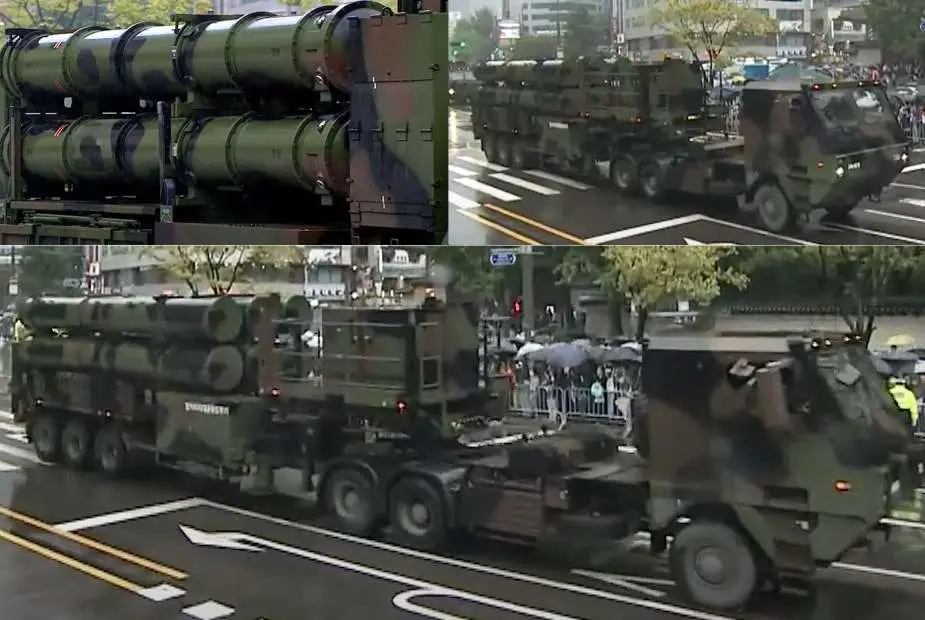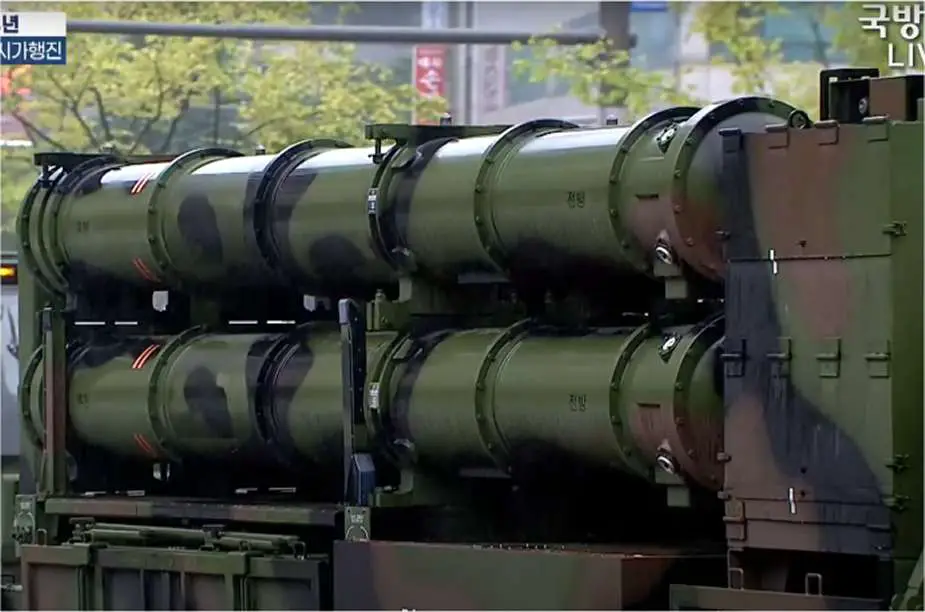Breaking news
South Korea parades with L-SAM air defense system amid rising tension caused by North Korea.
During the 75th Armed Forces Day military parade on September 26, 2023, South Korea unveiled its domestically produced Long-Range Surface-to-Air Missile (L-SAM). This introduction occurred at the Seongnam Seoul Airport in Seoul, South Korea, underlining the nation's commitment to strengthening its defense capabilities. As of the information provided, the L-SAM had not yet entered mass production and was scheduled for completion in 2024. However, it had already garnered international interest, potentially positioning it as an export item in the future, much like the K2 Black Panther Main Battle Tank and the K9 Thunder 155mm self-propelled howitzer.
Follow Army Recognition on Google News at this link

South Korea publicly unveils its L-SAM air defense system during the 75th Armed Forces Day military parade (Picture source: official YouTube channel of the South Korean Defense Media Agency)
The military parade commemorates the 75th anniversary of the founding of South Korea's Armed Forces and was the first military parade in a decade. South Korea has held a parade every five years to mark its Armed Forces Day but it was not conducted by President Moon Jae-in in 2018 as he sought rapprochement with North Korea. Pyongyang, for its part, has held several parades under Kim Jong Un, showing off its latest nuclear-capable missiles designed to strike South Korea and deliver warheads to the US mainland.
The L-SAM, characterized as a long-range surface-to-air missile, possesses the capability to intercept North Korean ballistic missiles at altitudes ranging from 50 to 60 kilometers. Its high-altitude capabilities have led to comparisons with the American THAAD system. Typically launched from a 16x16 mobile launcher with a capacity of up to six missiles, there are plans to enhance its interception capabilities. South Korean military authorities are actively developing the L-SAM-II, with plans to intercept missiles at altitudes ranging from 60 to 100 kilometers, further fortifying the nation's missile defense capabilities.
The L-SAM plays a central role in South Korea's 3-axis defense system, with its capacity to intercept projectiles at altitudes up to 60 km. This 3-axis system consists of three elements: the Kill Chain component ensures a swift response to North Korean missile threats, with the capability to target mobile missile launchers within 30 minutes. The Korean Air and Missile Defense (KAMD) is responsible for intercepting incoming North Korean missiles, providing an essential layer of defense. Finally, the Massive Retaliation Plan (KMPR) serves as a deterrent strategy, ensuring that North Korea faces significant retaliation if it initiates a nuclear attack.
The introduction of the L-SAM reflects South Korea's proactive approach to the nuclear and missile threats posed by North Korea, a concern heightened by reports that North Korea is considering delivering its missiles and Multiple Launch Rocket Systems (MLRS) to Russia as part of the conflict in Ukraine. Feedback on the performance of this equipment in Ukraine could assist Pyongyang in reducing the vulnerability of its missiles to interception, for example.
North Korea recently conducted a simulated "tactical nuclear attack" drill, involving two long-range missiles fitted with mock atomic warheads. This provocative exercise, reported by the KCNA news agency on September 3, 2023, was framed as a stern warning to perceived adversaries. North Korea reaffirmed its commitment to strengthening military deterrence, particularly in relation to South Korea and the United States, signaling preparedness for potential nuclear conflicts. During the drill, two cruise missiles, each carrying mock nuclear warheads, were launched toward the West Sea, covering a distance of 1,500 kilometers at a preset altitude of 150 meters.
These recent missile tests and military exercises are part of a series of actions undertaken by North Korea, which also included a failed spy satellite launch in the preceding month. Notably, these activities coincided with the conclusion of the joint annual summertime exercises between South Korea and the United States, referred to as Ulchi Freedom Shield. It's a customary practice for North Korea to criticize these joint drills, viewing them as preparations for war. In response to the deployment of US strategic bombers, North Korea launched two ballistic missiles. Nevertheless, South Korean officials have expressed skepticism about the credibility of North Korea's claims regarding the success of its nuclear strike mission.

The launcher can carry a total of six missiles (Picture source: official YouTube channel of the South Korean Defense Media Agency)























